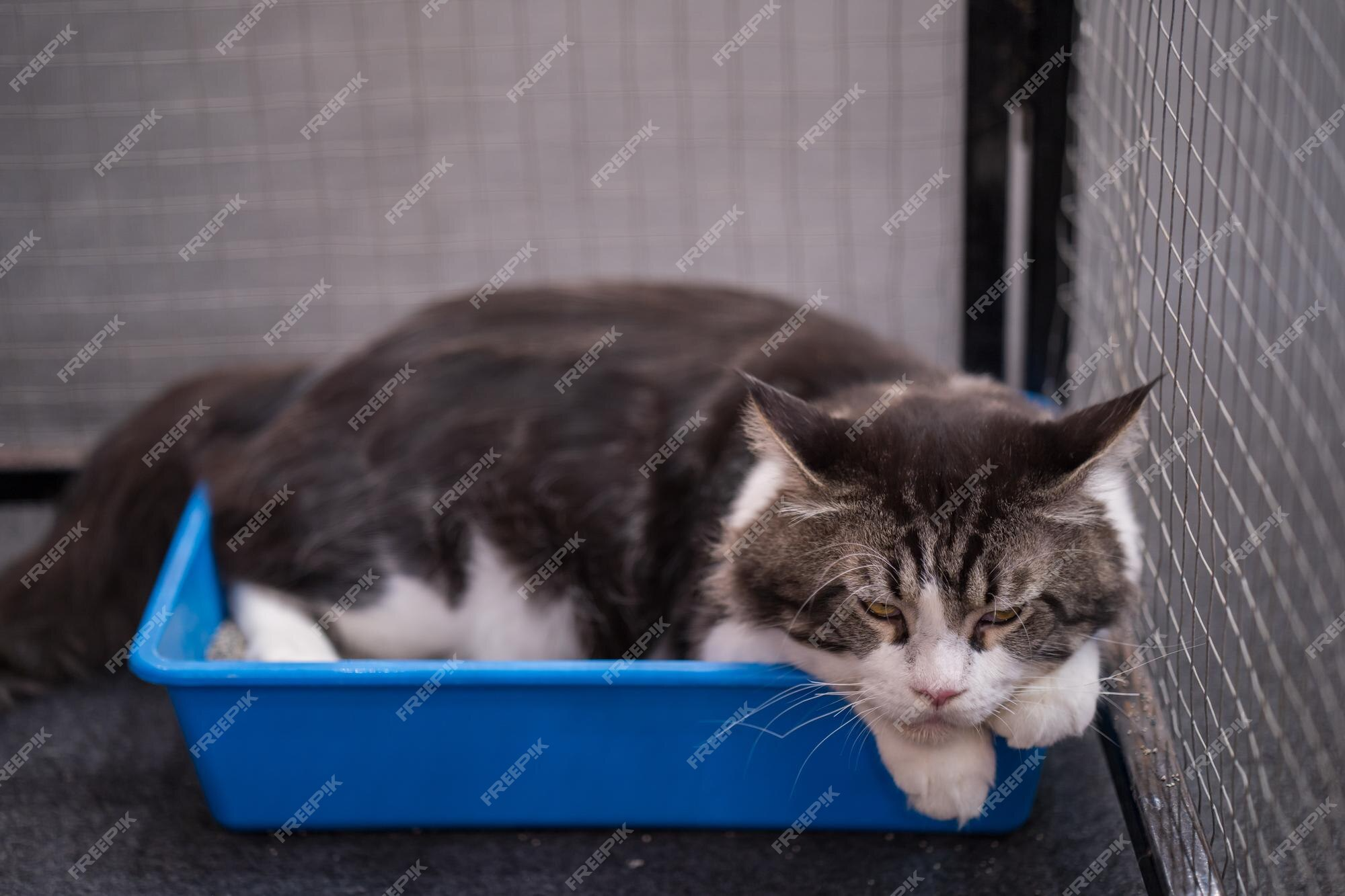It’s Not a Bad Cat — It’s a Bad Setup
Your cat just peed on the laundry. Again.
Before you get frustrated, pause: this probably isn’t rebellion. For most cats, avoiding the litter box is a cry for help — not a deliberate act.
Litter box problems are one of the top reasons people surrender cats to shelters. But in truth, the problem isn’t your cat — it’s what we humans think is “good enough” for a bathroom.
This guide will help you rethink your litter box setup from the ground up — including why cats avoid the box, how to fix it, and which design choices make both feline and human lives better. Whether you live in a studio or a multi-cat home, this is for you.
What Makes a Cat Say “No” to the Box

It’s Too Cramped, Exposed, or Awkward
Would you use a bathroom stall that barely fits your knees, has no privacy, or forces you to jump over a ledge?
That’s how your cat may feel about their current litter box.
Many mass-market boxes are too small, too deep, or too open. Some have slippery interiors or high entry points that stress older cats or kittens. For cats to use a box consistently, it must feel safe and intuitive.
A thoughtfully designed maison de toilette pour chat (cat litter box) gives your cat room to turn around, dig, and eliminate without being cramped or exposed. Bonus: it also fits better into a human home without screaming “bathroom in a bin.”
The Litter Box Is in the Wrong Place
Even a great litter box fails if it’s in the wrong place.
Cats avoid boxes near noisy appliances, busy entryways, or food bowls. They’re not being picky — they’re avoiding stress. A poorly located box creates anxiety, especially in small apartments or multi-cat homes.
That’s where design and placement work together. A discreet, well-proportioned bac à litière chat (litter box chat) can live in your living room without ruining your décor — which means your cat gets a calm, accessible space, and you don’t have to hide it behind a curtain.
Pro tip: In multi-cat households, follow the “N+1 rule” — one litter box per cat, plus one extra. Sharing can create tension and territorial issues.
It Smells Too Strong — Or Too Clean
Scented litter, deodorizing sprays, and harsh cleaners might please your nose — but your cat’s nose is 14 times more sensitive.
Many cats refuse boxes cleaned with bleach or pine-scented sprays. Even citrus-based solutions can signal “danger” to feline instincts. And a “clean” smell to you might be a chemical overload to them.
Instead, scoop daily, clean with mild soap or diluted vinegar weekly, and avoid switching litter types too often. Your goal isn’t a perfumed scent — it’s a neutral, quiet one.
It Might Be More Than Just the Box
Sometimes, litter box avoidance signals something deeper.
Straining, vocalizing, peeing outside the box, or frequent attempts without result may indicate a urinary tract infection, constipation, or stress. Cats are notorious for masking pain — and the litter box becomes the first thing they reject when something feels wrong.
If your cat changes habits suddenly, consult your vet before adjusting the environment. Behavior and health are often connected — solving both in tandem is the best path forward.
When One Box Isn’t Enough — The Multi-Cat Equation
Many cat owners assume that one litter box is enough — even in a household with multiple cats. But this assumption often leads to subtle conflict, silent stress, and surprise accidents.
Here’s what feline behaviorists recommend:
One box per cat, plus one extra.
This “n+1” rule gives each cat private space, reduces competition, and lowers the chance of guarding or territorial marking — especially if your cats aren’t tightly bonded. Even cats that seem to share nicely may avoid using a box that another cat used recently, especially for urination.
To make this work in smaller homes:
- Place boxes in different areas, not side by side
- Vary entry styles to suit different cat preferences
- Keep all boxes equally clean — cats will reject even a spare box if it’s neglected
If one of your cats always goes elsewhere while the other uses the litter box reliably, lack of access or tension might be the hidden cause. Adding one more well-placed box — even a simple, affordable option — could be the simplest fix of all.
How to Fix It: Design That Works for You Both
Pick the Right Entry for the Right Cat
Top-entry boxes look sleek — but they can be tough for seniors or timid cats. High walls may block scatter, but also discourage small or arthritic cats.
Match the box to your cat’s physical ability. For example:
- Seniors: low front entry with non-slip base
- Large breeds: oversized interior with curved walls
- Kittens: shallow ramped edge to encourage confidence
If you’re not sure, observe how your cat enters and exits. Hesitation, perching, or half-out positions signal discomfort.

Choose Something You’re Proud to Display
When a litter box looks awful, we hide it.
When we hide it, we usually put it somewhere stressful for the cat.
Modern litter boxes can be functional and beautiful. Choose wood tones, enclosed styles, or furniture-integrated boxes that you’re happy to leave in sight. This helps you place it in calm, accessible spaces — and keeps you from delaying clean-up just because it’s “out of sight.”
If a design box feels too expensive now, try adding a neutral-colored cover or repositioning what you have. Small shifts make big differences.

Keep It Clean — But Not Complicated
Scoop at least once per day — ideally after each use. Fully empty and wash the box every 1–2 weeks, depending on the type of litter and how many cats share it.
Avoid complex automatic boxes with loud motors or moving parts. What looks high-tech to you may feel threatening to your cat. Instead, stick with quiet, consistent routines and materials your cat already trusts.
Clean, quiet, and predictable wins every time.
Final Thoughts: The Box Is a Relationship, Not a Container
Your cat’s bathroom isn’t just a plastic tray.
It’s where they feel safe. Private. Respected.
When cats avoid the litter box, it’s not “bad behavior” — it’s communication. They’re telling you that something feels wrong.
By choosing a better design, cleaning with care, placing the box where your cat feels secure, and respecting their instincts, you build more than good litter habits. You build trust.
And that makes your home better — for both of you.




